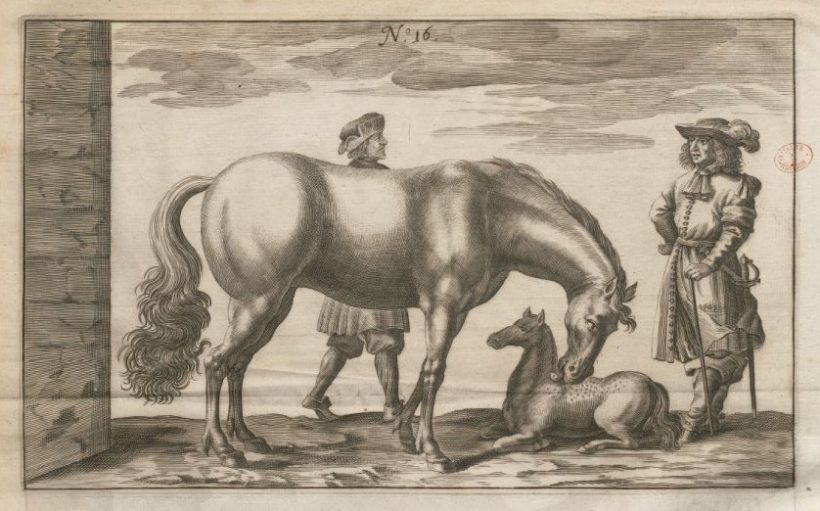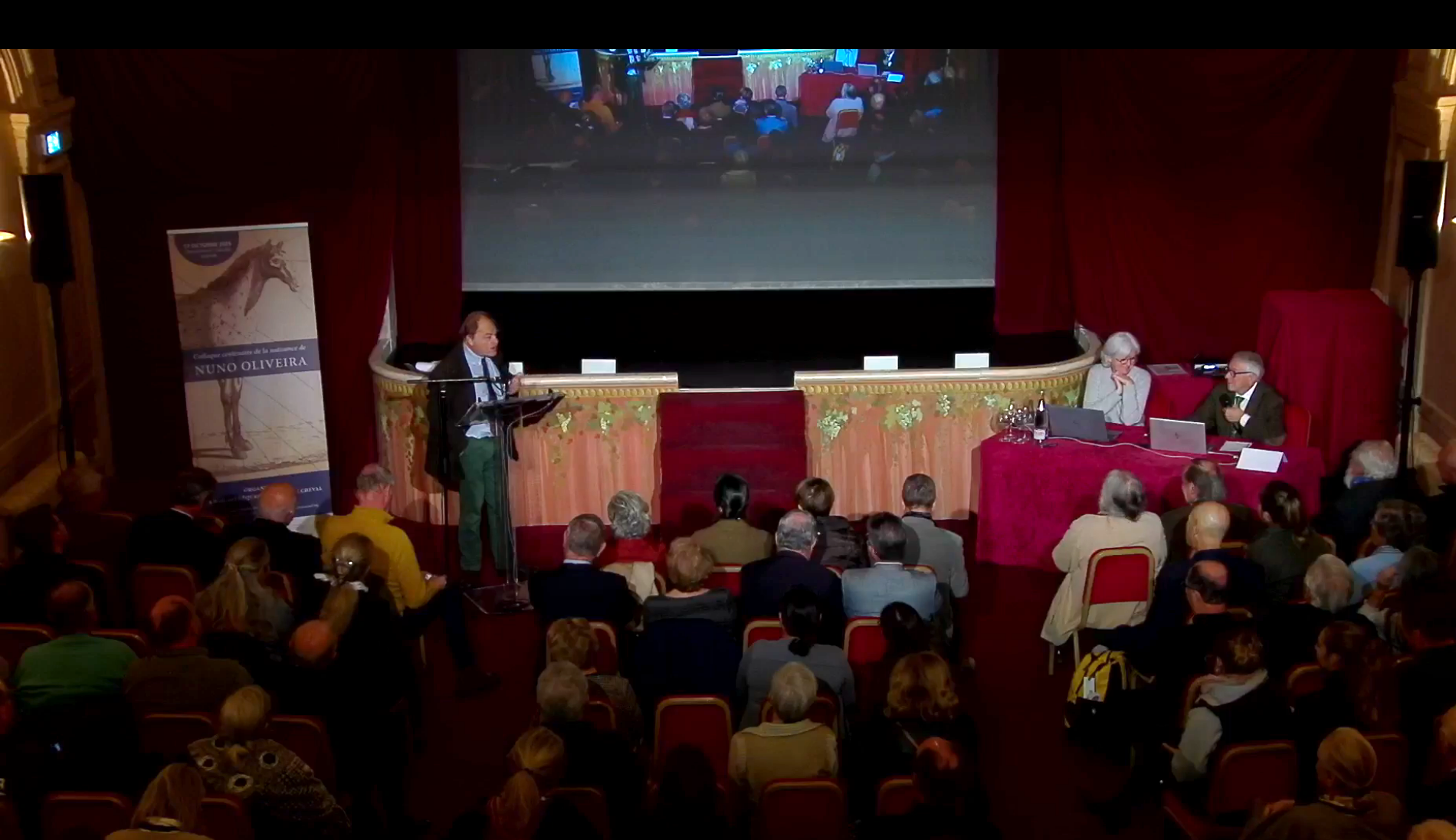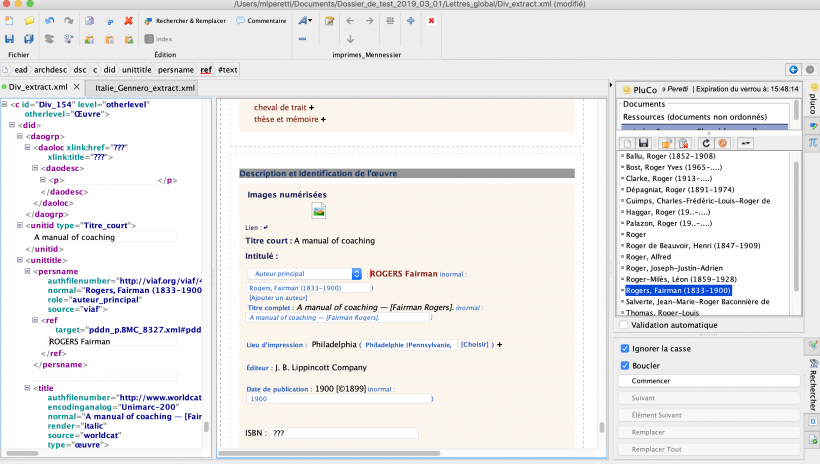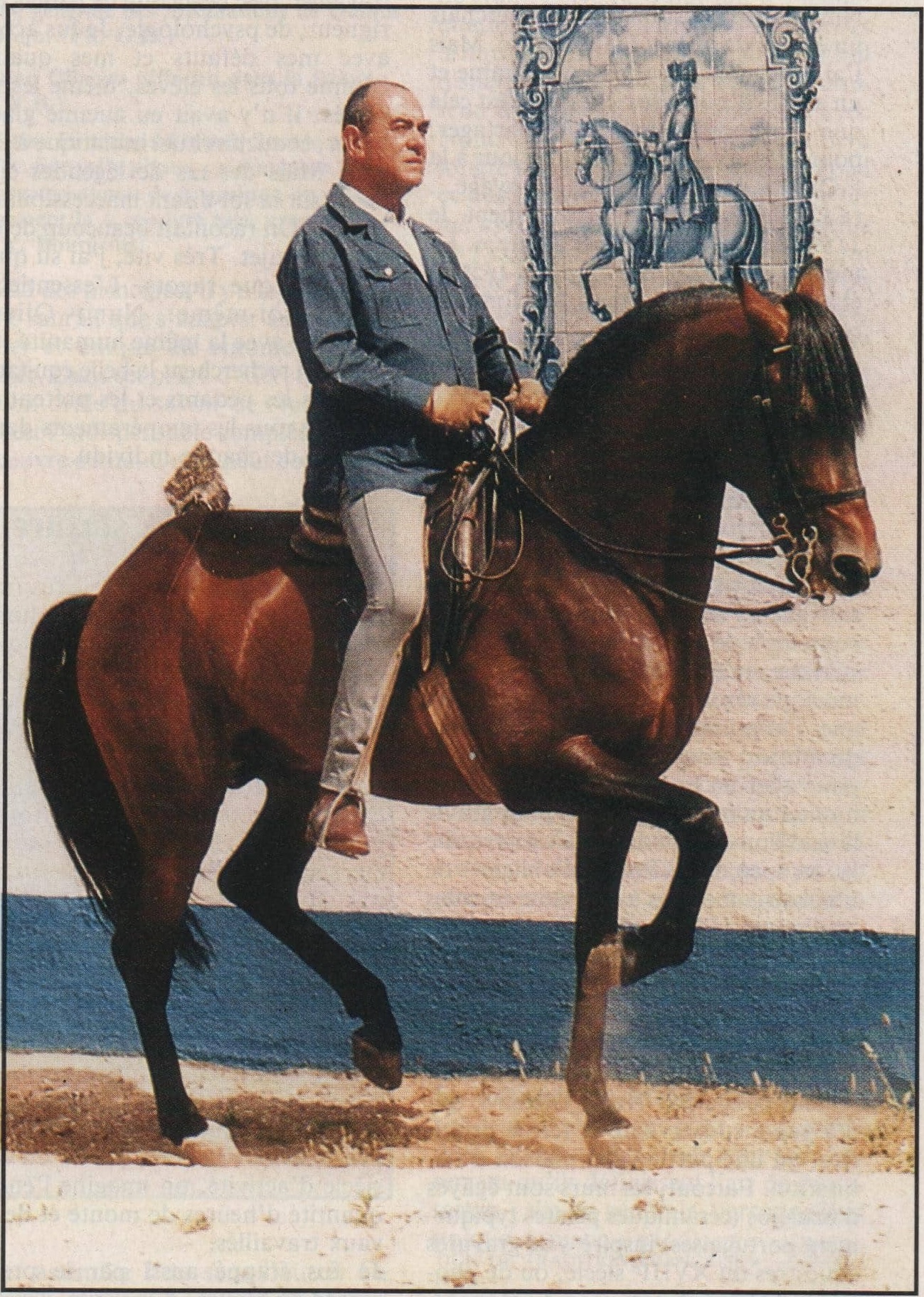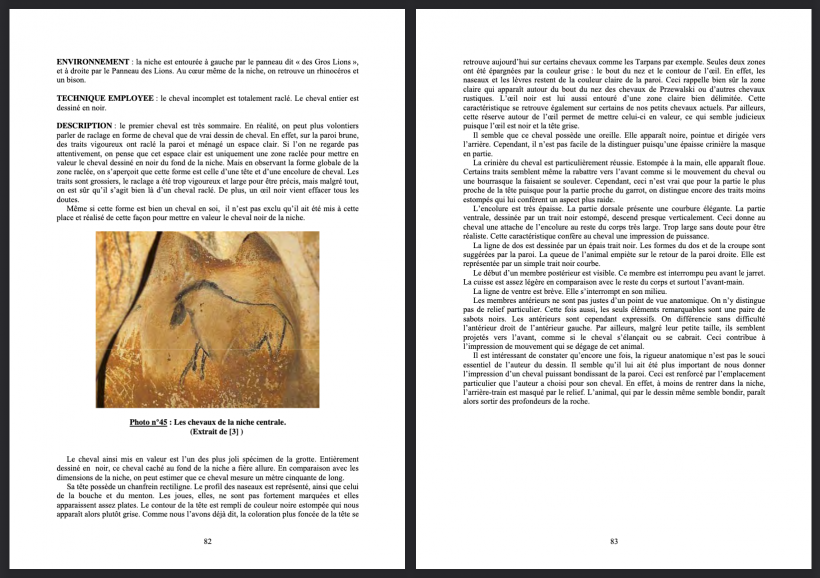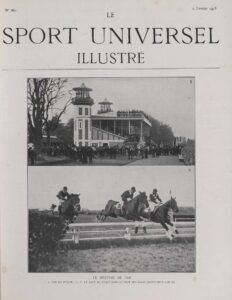
Bourgelat's manuscript at Alfort
The library at the École Nationale Vétérinaire d'Alfort is a treasure trove. A manuscript attributed to Claude Bourgelat (1714-1779) can be seen in one of the old-fashioned shelves.
In 1762, at the urging of his friend Bertin, Comptroller General of Finances, Bourgelat, then a squire, founded the Lyon Veterinary School and, four years later, the Alfort Veterinary School. Keeping his modest students - some of whom could barely write - at a distance, he wrote his teaching in notebooks that they had to learn by heart. Over the years, some of these manuals were printed: Matière médicale (Medical Matter - 1765, four notebooks), Traité de la conformation extérieure du cheval (1768 – Treaty on the external forms of the horse ). Others, written by his collaborators, nonetheless bear his signature: Zootomie ou anatomie comparée (1766-1769, four notebooks – Zootomy or comparative anatomy) owes much to the surgeon Honoré Fragonard, director of Alfort, particularly the "observations d'anatomie comparée sur le taureau et le bélier" (comparative anatomical observations on bulls and rams) and ; Traité des bandages (1770 – Bandage treatise) and Explications des proportions géométrales du cheval (1775 – Explanations on the geometrical proportions of the horse) by François Vincent; finally, Philibert Chabert collaborated extensively on Essai théorique et pratique sur la ferrure (1771 – Theoretical and practical essay on horse shoeing).
The founder also published articles, particularly in 1778, in the Journal de l'agriculture, du commerce, des arts et de finances: "Recherches sur le méchanisme de la rumination: exposition anatomique des estomacs du bœuf" (June, p. 41-77)( Research into the mechanics of rumination: anatomical exposition of the stomachs of cattle); "Second part" (July, p. 67-101); “Interesting questions” (series of seven questions on racehorses) (September, p. 51-88); "Lettre du Comte de P*** sur les chevaux" (October, p. 63-87)(Letter of Count de P*** on horses).
Finally, when he died, Bourgelat left unpublished autograph manuscripts, few of which have survived to the present day. However, copies have been made by his pupils. His successors kept his memory alive, as did Jean-Baptiste Huzard, who used the publishing house inherited by his wife Rosalie Vallat-la-Chapelle to reprint the works of the visionary veterinary surgeon. In this way, he skilfully supplemented the manuscripts he had collected.
From this, it is possible to identify the texts brought together in the present work by Alfort, which comprises, in the same handwriting, two parts in separate paginations under the same binding.
First part:
- La Phisique des Haras and les Doutes et questions relatives aux haras (in the form of questions and answers)( The physics of stud farms and doubts and questions relating to stud farms), were printed in the 7th edition of the Traité de la conformation du cheval (1818, p. 415-556)(Treatise on the conformation of the horse) by J.- B. Huzard, who added: “The third part, which deals with stud farms, is printed here for the first time; it had been in the hands of students for a long time, and the copies had been successively altered, to such an extent that in several cases it was not possible to recognise the meaning or decipher the names of the authors quoted. I made my copy from Bourgelat's own manuscript. [...] In reading this third part, you will be astonished to recognise details and whole sections that are to be found in some modern works on stud farms. [See, among others, what M. de Lafont-Pouloti has to say about it in his Nouveau régime pour les haras (New regime for the stud farms)Paris, 1787, p. 335-339][1].
- The Observations générales sur le boeuf, les bêtes à laine, la chèvre et le cochon (The General Observations on oxen, woollens, goats and pigs) (p. 101) were deleted from the 3rd edition of the Traité de la conformation du cheval (1785) for the following reasons: “As for the general observations that Bourgelat had collected on oxen, sheep and other domestic animals, which are mentioned in this note, the progress of knowledge acquired on these subjects, and the works published since that time, now make this part of his work much less necessary for students [2]”.
- he Description des estomacs dans les animaux ruminants (Description of the stomachs of ruminant animals) (p. 139), certainly with Bourgelat's cooperation, was published in the Journal d'agriculture in 1778. In addition to the Latin exergue, which the training of his collaborators would not have allowed them to understand, itquotes authors beyond their reach: Aristotle, Severini (Marc-Aurèle Severini, 1580-1656, Zootomia democritea, 1645), Claude Perrault (1613-1688). The writing, elegant but confused, did not achieve the scientific simplicity that Bourgelat's successor, Philibert Chabert, would demonstrate in: Des organes de la digestion dans les Ruminans, à l'usage des élèves des Écoles Vétérinaires (1787)( Organs of digestion in Ruminants, for the use of students at Veterinary Schools).
In the second part, the Notes concernant les Haras (Notes on the stud farms) are none other than the regulations governing stud farms in Bertin's day. As Marc Mammerickx does not mention this publication in his bibliography of Bourgelat, we need to be sure that these are not extracts from the Plan pour une nouvelle Administration des haras (between 1760 and 1764) (Plan for a new stud farm administration) held by the Bibliothèque Mazarine and mentioned by Jacques Mulliez[3].
In short, the contents of this copy (remarkable in that it belonged to General Mennessier de La Lance, whose engraved armorial ex libris it bears) can be found printed elsewhere in its entirety, with the exception of the final regulations for the stud farms (unless research succeeds in determining the source).
[See Marc Mammerickx, Claude Bourgelat, avocat des vétérinaires, Brussels, l'auteur, 1971, pp. 77-91, and 101-103].
François Vallat
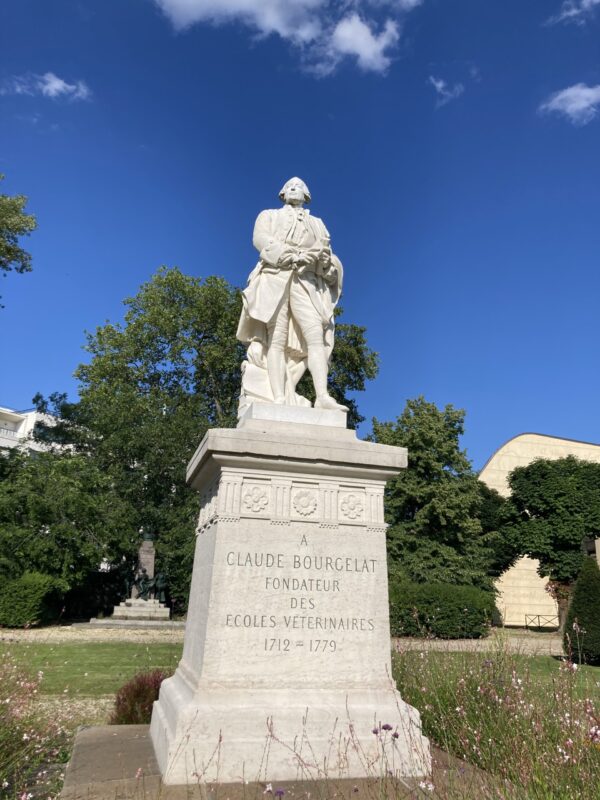
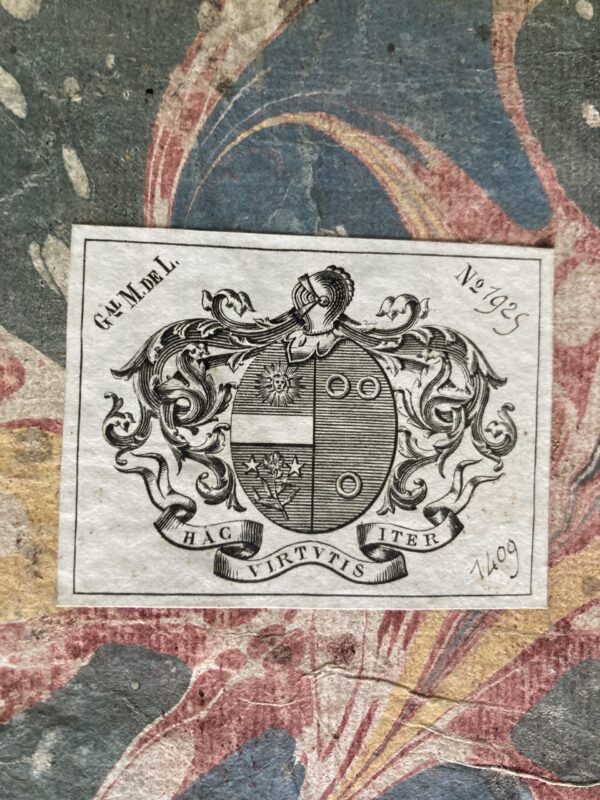
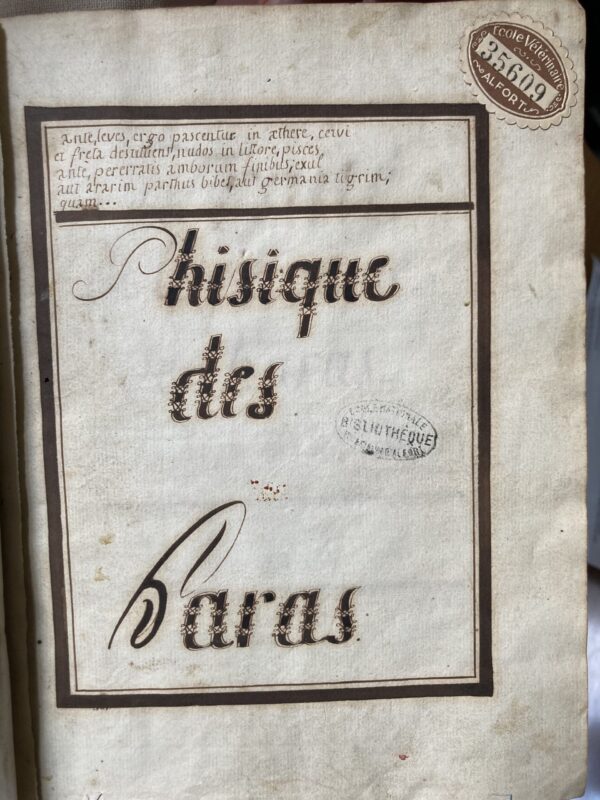
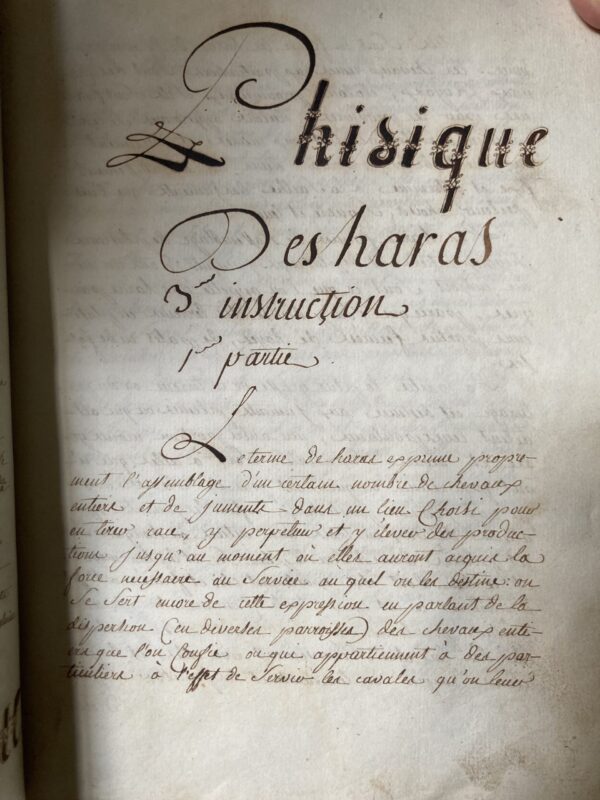
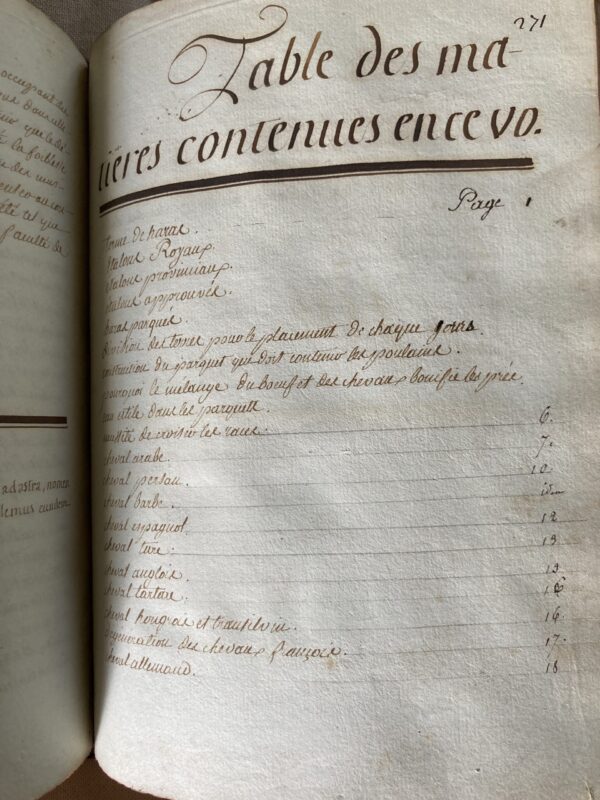
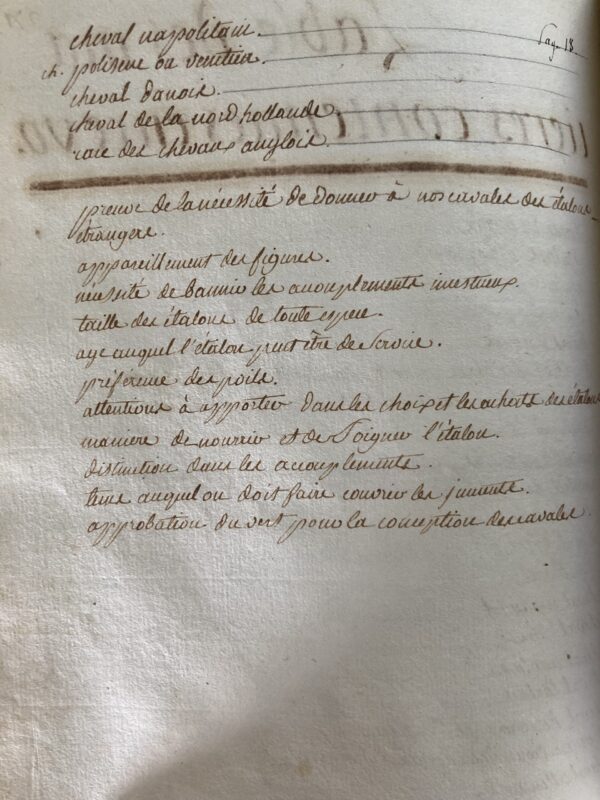
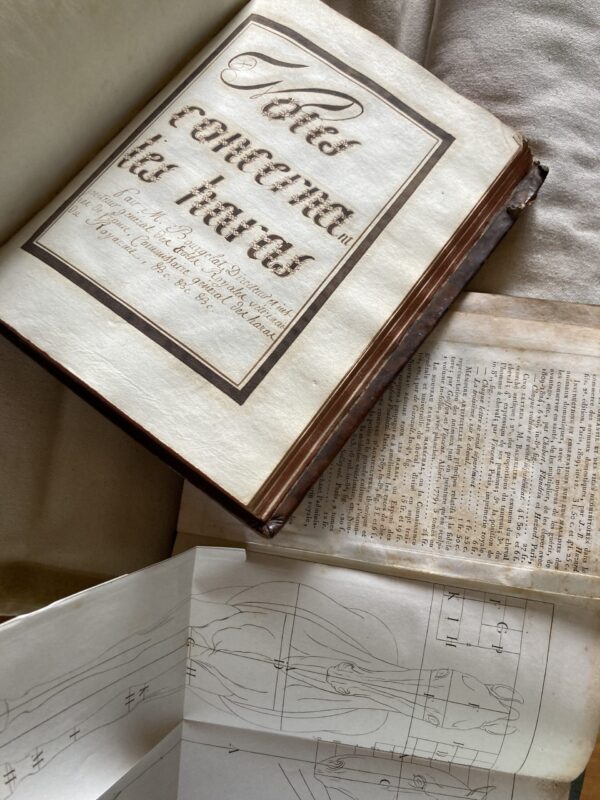
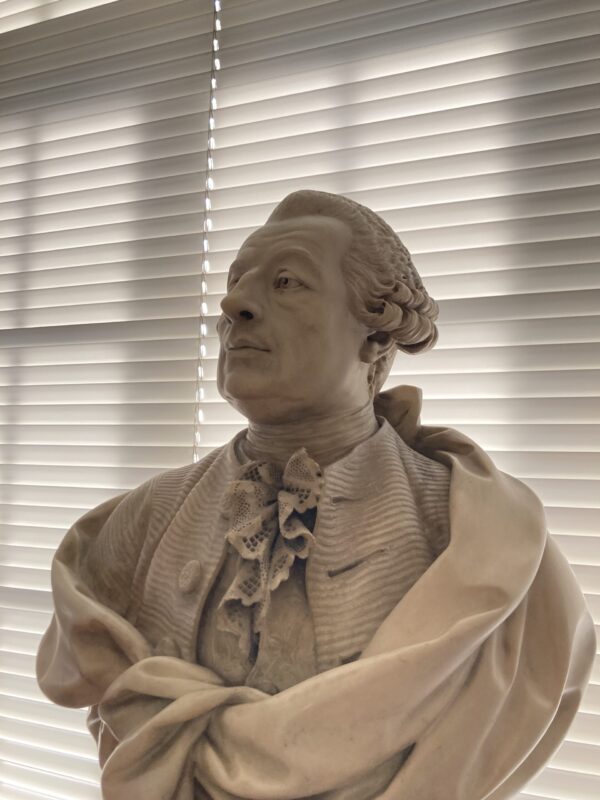
For more information:
- The Alfort manuscript
- Claude Bourgelat
- The library of the École nationale vétérinaire d'Alfort
- The Lyon manuscript
[1] Bourgelat Claude, Élemens de l'art vétérinaire. Traité de la conformation extérieure du cheval, de sa beauté, de ses défauts ; des considérations auxquelles il importe de s'arrêter dans le choix qu'on doit en faire pour les différens services ; des soins qu'il exige pour le conserver en santé ; du choix de sa nourriture ; de sa multiplication, ou des Haras, etc., 7th ed. with notes by J.-B. Huzard, Paris, Mme Huzard, née Vallat-la-Chapelle, 1818, p. xi-xii. (Elements of the veterinary art. Treatise on the external conformation of the horse, its beauty, its faults; the considerations that must be taken into account when choosing a horse for different services; the care that it requires to keep it healthy; the choice of its food; its multiplication, or stud farms, etc.)
[2] Ibid, pp. ix-x.
[3] Mulliez Jacques, Les chevaux du royaume, histoire de l'élevage du cheval et de la création des haras, Montalba, 1983, p. 284. (Horses in the kingdom, history of horse breeding and the creation of stud farms).
